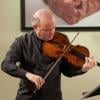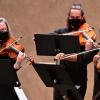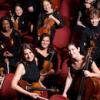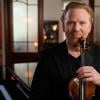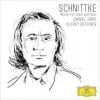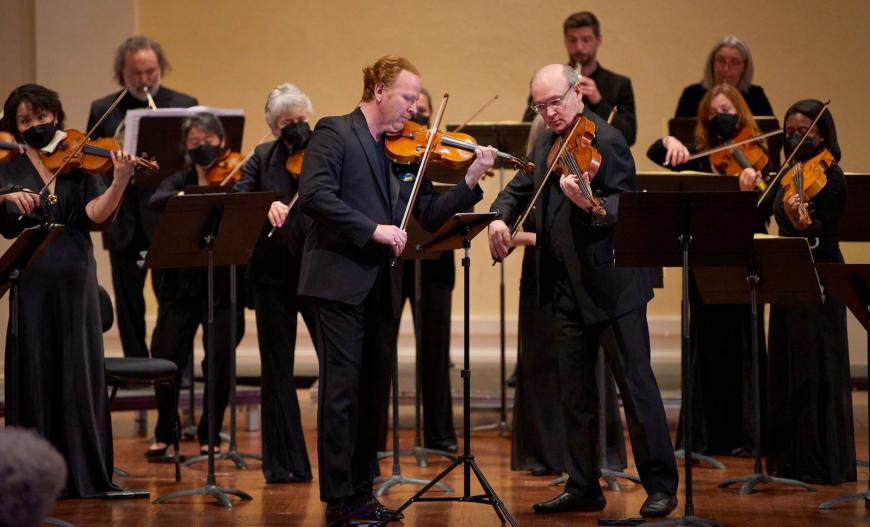
In his absorbing new memoir, Every Good Boy Does Fine (Random House), the pianist Jeremy Denk describes an early musical enchantment. At age 12, listening to a cassette recording of Mozart’s Sinfonia Concertante for Violin, Viola, and Orchestra, K. 364, the budding young performer felt a sequence of trills bring on a transport of full-body musical wonderment.
”The growing, climbing notes were mapping onto me everywhere,” Denk writes, “rising in my chest, changing my breath, and in the balls of my feet, making me stand on my toes. I was no longer receiving music from without, but being filled from within, like a balloon.”
No one got up to stand on their toes during the Saturday, May 14 performance of the composer’s mid-career masterpiece by the New Century Chamber Orchestra at Herbst Theatre. But it’s safe to say that more than a few listeners felt the kind of elevating thrill Denk did. With violinist (and NCCO music director) Daniel Hope and violist Paul Neubauer in glowing form, the double-concerto Sinfonia was the beautifully shaped centerpiece of an all-Mozart evening. Two of the composer’s symphonies, a very early one and a very late one, bracketed the Sinfonia.
That work’s alluring qualities emerged early, with some winningly furled phrases exchanged in charming fashion by the oboe and strings. When the two soloists made their presence felt, they did so in lyrical equal partnership Hope and Neubauer were in sweet accord from the start, their singing voices responding to each other and blending in limber passagework and limpid parallel phrases. The orchestra celebrated now and then with deftly burbling woodwinds and horn fanfares.
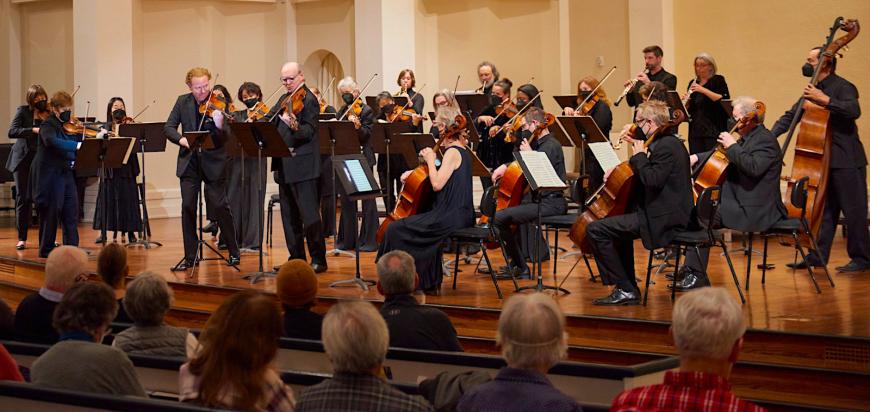
A rarely heard 19th-century cadenza, heightened by luxurious rubatos and some busy fiddling, bordered on the overblown. But just when it all seemed a bit much, the two soloists tapped their stylish tact to bring the movement to a satisfying close.
In the poignantly ravishing Andante, Hope and Neubauer offered a subtly shaded approach to their partnership. When the violin breathed out a plangent question, the viola answered in consolation. Played out over the orchestra’s softly pulsing strings, the back-and-forth moved toward a deeper accord. A tender, unaccompanied passage was especially heart-rending. A sinewy but light-footed Presto brought the Sinfonia to an ebullient close.
Neaubauer, as Hope noted in brief remarks to the audience, was performing with scordatura, a tricky method of tuning that brings a brightening effect to the viola’s tone. That technical adjustment may well have made the two soloists seem even more closely aligned. The synchrony of technique and interpretive finesse delivered a stream of musical eloquence.
Denk was 12 when he discovered a piece of music that helped put him on his path. Mozart, at that age, had already composed eight symphonies. For the record, comparisons to Mozart and almost anyone else are intrinsically unfair. So, for that matter, are contrasting judgments of the composer’s apprentice works and his propulsive Symphony No. 40, which ended the bill.
Hope and his players, all of whom but the cellists performed standing, offered a spry performance of the early work. After two pleasant if somewhat perfunctory movements, the composer’s incipient genius came through in a jaunty Minuet with some ingenious development and then in the witty echo effects in the last movement.
Hope’s fleet tempos in the G-Minor Symphony No. 40 worked best in the outer movements. The liquidly unstable opening theme highlighted the music’s tension and release and rewound tension, sharpened here by the supple insights from the woodwinds and horns. The ensemble’s Andante ran to taut, sometimes detached phrasing. The Minuet’s trio was a graceful interlude.
The evening ended in exhilarating fashion, with Mozart’s thematic and harmonic inventiveness and sheer head-spinning audacity plunging ahead. A few patches of ragged playing couldn’t dim the effect. Lean but muscular when needed, transparent but forceful, the New Century gave this mighty work the full-on conviction it demands and deserves.



